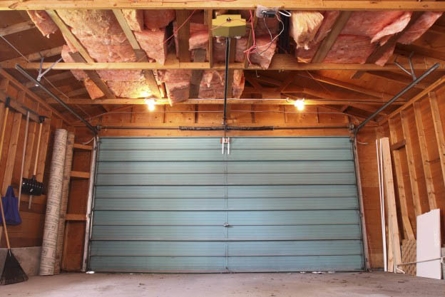
Mold in Garage: Treating and Preventing
Mold thrives in damp, dark environments and can grow anywhere, both outside and indoors. Mold finds its way in through open doors, windows and HVAC systems. Mold spores even stick to and enter the home on shoes, clothing, family pets, and kids' backpacks. That's why your garage is particularly vulnerable to mold, especially when it's attached to the home and used as a main entrance. Mold in the garage is not uncommon. Fortunately, it can be removed, and you have the power to prevent it from developing in the future.
Why Does Mold Grow in the Garage?
Unlike the interior of your home, garages are fully exposed to the elements every time the garage door is opened and, sometimes, even when it's closed. The garage door rarely has a tight seal between its edge and the floor, which makes it especially easy for water to get in. You may find pools of water inside your garage after a heavy rain or snow. Similarly, wet or snow-covered shoes and tires from bikes or cars left in the garage can add additional moisture. Do you wash your car in the garage? The average garage can see a lot of water. Think about the items you keep in your garage. Mold loves to grow on cardboard and other paper products as well as on wood, fabric and even concrete, especially when painted. A garage with poor drainage, poor ventilation and little natural light is a haven for mold growth.
How to Get Rid of Mold in Garage Spaces
Mold needs to be scrubbed thoroughly, and spores need to be contained as you go. To keep mold spores from spreading in your garage while you clean, first spray the affected area with warm water. Next, spray the mold with bleach or a commercial cleaner designed to neutralize and lift mold spores. Distilled white vinegar or hydrogen peroxide are both options, but they should never be mixed together. Once you've applied the cleaner and briefly let it sit, scrub the area with a stiff-bristle brush. Rinse the area with water and repeat the process if any mold remains.
After successfully scrubbing and removing the mold, be sure to dry the affected area thoroughly.
If you're tackling mold cleaning in your garage on your own, it's important to take certain safety precautions. When working with any type of chemical cleaning product, especially bleach, only work in a well-ventilated space and wear protective gear including gloves, glasses and a mask.
Safety tip: Never mix bleach with ammonia or other cleaners, as it can produce fumes that are harmful to your health.
Who Can Help With Garage Mold Removal
If you see mold growing in your garage, consider calling a licensed mold tester to analyze the scope of the problem. The tester will fully inspect your mold situation and alert you to any mold in areas you can't see easily, like the crawl space or other areas of the home. If mold is found beyond your garage, we recommend calling a professional team of mold remediation experts. Even if the mold is contained to your garage, a large amount may be better handled by professionals who can carefully and completely remove all traces of mold.
How to Prevent Mold in Garage Spaces
There are a variety of ways to prevent mold from developing in a garage that is frequently exposed to the elements.
- Remove standing water immediately with a squeegee, then dry the area
- Install a dehumidifier to lower the moisture level
- Make sure the area has adequate ventilation and sunlight, if possible
- Use only waterproof or mildew-resistant paint on the concrete
- Replace cardboard storage boxes with sturdy, plastic totes
- When building or remodeling, use mildew-resistant materials
If the mold problem in your garage persists or is simply too large for you to handle alone, contact ServiceMaster Restore for quick, safe and effective mold remediation services. Call 1-800-RESPOND or find your nearest ServiceMaster Restore location today.
Recommended Further Reading
